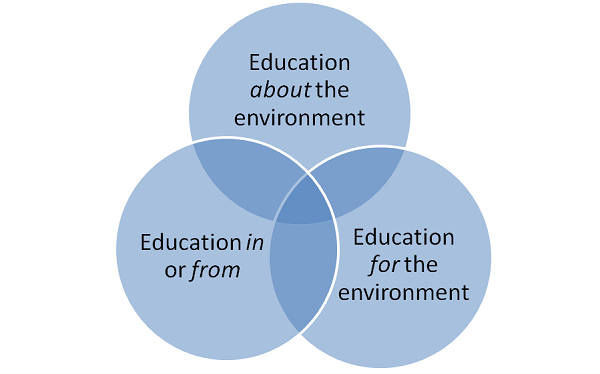XI. 4.
Put the letter
Below you can read case studies which describe a variety of projects in the area of environmental education. Read these descriptions and discuss with your groupmate(s), which of these projects has been implemented. Put the letter, with which the project description is marked, in the appropriate circle.
A. The teachers at a village school were worried about a forest just outside the school grounds. It was a forest, having been abandoned for years, where only a few people from the village dared to go for a walk. On the other hand the children were fascinated by the forest and they wanted to explore it and to use it for their activities. The children proposed to ask the community and their parents for help to make the forest cleaner, clean up waste, and make the forest more accessible. The children, together with their teachers made specific plans of what to do and when to do it. In three days - with the help of the community - the abandoned forest was made more appealing to people. Wild plants, typical of the area were planted in order to offer a variety of plant communities. Nice-looking stones were displayed along the footpath. The whole community continued to help in ground preparation in order to plant trees of different species.
The forest is now being used as an educational site. It is an extension of the school ground but also a kind of ‘botanical garden’ to be observed all year long. Special school programmes deal with different aspects of the forest during the year, and teachers and children take care of it regularly. The villagers come now to the school for jogging and exercising and they also make use of the
B. A teacher checked the waste lying about around the school building and also identified what kind of waste these items were. After that the children watched a film introducing ways of waste management to dump and illustrated the process with their own drawings. After that they buried different waste types in the school yard and studied whether or not they got degraded. They noted down their observations in a table format.
C. A teacher organized a field trip to introduce the birds of the town to his class. Prior to the trip he gave learners pictures of those birds which may live in an urban setting. Two pictures were given of the same species, one was the picture of the female the other one was the picture of the male bird. Children worked in pairs and their task was to find out where and in what circumstances ’their birds’ lived. They also had to find out what environmental factors were beneficial or harmful for them. During field work the pairs of children had to share their findings and outline recommendations how the inhabitants of their town could help to make birds’ lives better.
